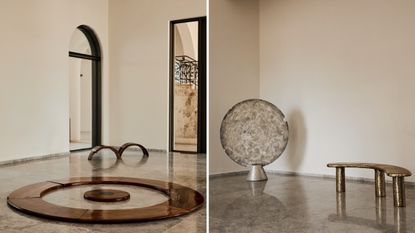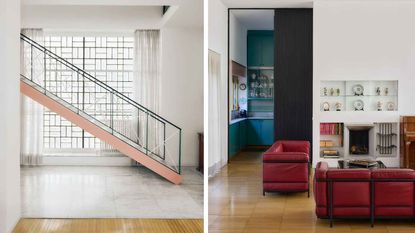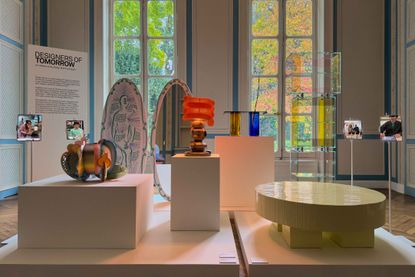Design Events
The best of the year's design events calendar, compiled by Wallpaper*
-
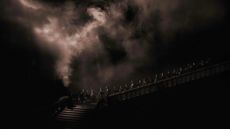
Alexander Wessely turns the Nobel Prize ceremony into a live artwork
For the first time, the Nobel Prize banquet has been reimagined as a live artwork. Swedish-Greek artist and scenographer Alexander Wessely speaks to Wallpaper* about creating a three-act meditation on light inside Stockholm City Hall
By Ali Morris Published
-

Design Miami announces Dubai collectible design platform in collaboration with Alserkal
The new platform will honour the region’s cultural heritage while highlighting its spirit of innovation
By Rosa Bertoli Published
-
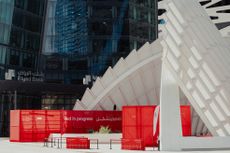
‘Locally anchored and globally conversant’: Salone del Mobile debuts in Saudi Arabia
Salone del Mobile lands in Riyadh (26-28 November 2025), bringing its creative and manufacturing know-how to one of the world’s fastest-growing markets and setting the stage for Italo-Saudi design relations
By Ifeoluwa Adedeji Published
-
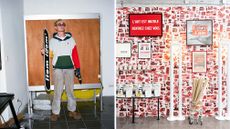
Is this Paris' most design-focused holiday shop?
Shop weird and wonderful design and fashion at this playful, postmodern exhibition from Item Idem, where commerce, culture and humour intersect
By Anna Solomon Published
-
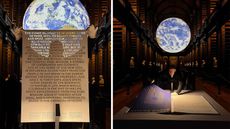
A postcard from Irish Design Week 2025
How Ireland's collaborative design culture, from Kilkenny's 60-year legacy to island circularity offers an expansive model for the future
By Laura Havlin Published
-
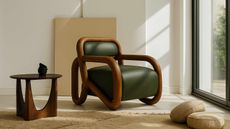
Five women-led studios reshaping Indian creativity at Design Mumbai 2025
Design Mumbai 2025 opens 26-29 November – Wallpaper* meets five women-led local brands exhibiting at this year's show
By Ali Morris Published
-
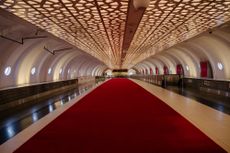
Itinerant design fair Nomad lands in Abu Dhabi's Zayed International Airport
Nomad brings new life to an iconic Abu Dhabi building, marking a new point of arrival (or departure?) for collectible design in the region
By Cristina Kiran Piotti Published
-
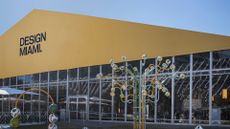
Everything you need to know about Design Miami 2025
The collectible design fair returns to Miami Beach in December for its 21st edition, alongside a vast array of art and cultural events across the city
By Dan Howarth Published
-
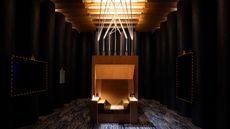
Salone del Mobile: tickets, timings and locations for Milan Design Week
Here is your expert guide to Salone del Mobile and Fuorisalone: how to get to the fair, and what to see across the city
By Rosa Bertoli Last updated
-

Nifemi Marcus-Bello in Lagos: ‘The conditions and histories of Africa are my greatest inspiration’
As the Nigerian designer stages ‘Material Affirmations: Acts I–III’ at Tiwani Contemporary (until 10 January 2026), he speaks to Wallpaper* about African craft and industry, and Lagos as his muse
By Ugonna-Ora Owoh Published
-
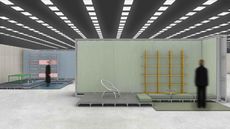
Salone del Mobile 2026 will embrace collectible design with Salone Raritas
Salone del Mobile has Salone Raritas, a new exhibition space at the fair (21-26 April 2026), curated by Annalisa Rosso and designed by Formafantasma
By Rosa Bertoli Published
-
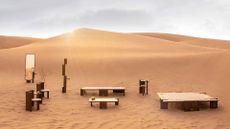
A postcard from Dubai Design Week 2025: creativity blooms against a desert backdrop
The Emirates may still shimmer with spectacle, but beyond the surface a new generation of creatives is fusing research, heritage and innovation to build sustainable, future-facing practices
By Ifeoluwa Adedeji Published
-
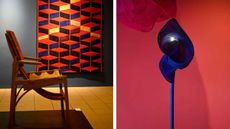
Postcard from Lagos Design Week 2025
This year's Lagos Design Week demonstrated how Nigerian and African designers continue to expand the language of form, texture, and material
By Ugonna-Ora Owoh Published
-
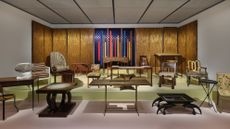
Art Deco's centenary is honoured with a grand exhibition in Paris
To mark 100 years of Art Deco, the Musée des Arts Décoratifs in Paris is holding a retrospective that includes furniture, tableware, clothing, jewellery and objets d’art (on view until 26 April 2026)
By Brian Ng Published
-

A postcard from We Design Beirut: 'We’re learning how to break barriers and create dialogue'
The second edition of We Design Beirut celebrated design, architecture, heritage and creativity
By Maghie Ghali Published
-
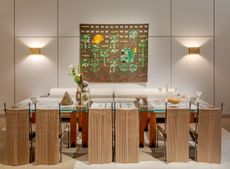
These are the best design exhibitions to see in Paris this week
As Design Miami Paris and Art Basel Paris make their return, we round up the best design exhibitions to discover in the city
By Rosa Bertoli Last updated
-
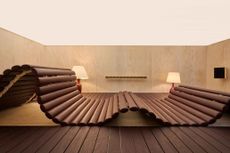
Best of Design Miami Paris 2025: animal sculptures and musical ping-pong tables
Design Miami Paris returns to the Hôtel de Maisons (until 26 October 2025): here are the Wallpaper* highlights
By Rosa Bertoli Published
-

At Design Miami Paris, an artful menagerie tells a story of scent and nature
Vikram Goyal and Sissel Tolaas present ‘The Soul Garden’ at Design Miami Paris (until 26 October 2025), ‘a contemporary fable where the animals take new forms, reimagined for the world we live in today’
By Henrietta Thompson Published
-
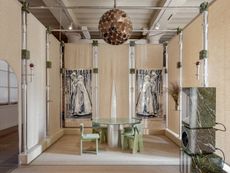
A monumental exhibition of French design revives the spirit of art deco for contemporary times
The Galerie des Gobelins hosts the inaugural Salon des Nouveaux Ensembliers, a contemporary movement inspired by art deco’s grand traditions
By Fabienne Dupuis Published
-
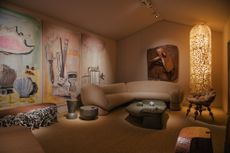
Step inside Faye Toogood's intimate cabinet of curiosities at PAD London
For PAD London 2025, (until 19 October) Faye Toogood presents The Magpie’s Nest with Friedman Benda
By Rosa Bertoli Published
-
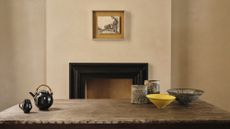
Rajan Bijlani opens his Primrose Hill home for ‘Electric Kiln’
In his London home – once the studio of ceramicist Emmanuel Cooper – Rajan Bijlani stages ‘Electric Kiln’, uniting Frank Auerbach, Lucie Rie and Cooper in an intimate reflection on the creative spirit of postwar London
By Ali Morris Published
-
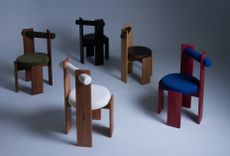
These are the design exhibitions to see in London during Frieze Week
We round up the best design events happening in London in conjunction with Frieze Week 2025: discover collectible design and craft across the city
By Rosa Bertoli Published
-
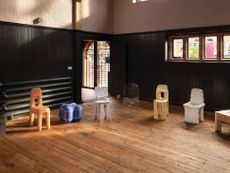
'They're like my friends:’ Max Lamb exhibits a decade of chairs in a former church hall
The British designer’s new London show, ‘Exercises in Seating 3' (until 2 November 2025), brings together over 30 diverse works in a circle of connection
By Francesca Perry Published
-
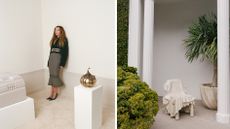
Sculpture meets jewellery meets sport? Kelly Wearstler’s latest venture is doing something completely new
The designer is launching a new curatorial platform, Side Hustle, free from the limitations of commercial commissions and aiming to foster truly original, experimental and interdisciplinary work
By Anna Solomon Published
-
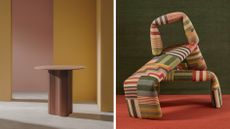
The brands and trends to know from Feria Hábitat València 2025, Spain’s leading design fair
Wallpaper* reports from the fair, where Spanish design brands showcased technical innovations, customisable versatility, and sensory, nature-inspired collections
By Anna Solomon Published
-
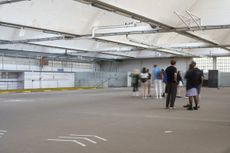
Vienna Design Week 2025 is a pit stop for the future
Vienna Design Week (until 5 October 2025) continues its nomadic journey – revisiting forgotten spaces, rethinking ageing and tradition, and exploring what design means in a world defined by movement and change
By Hiba Alobaydi Published
-
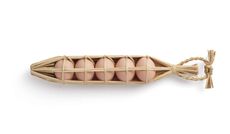
Exploring tsu tsu mu: a new exhibition in Tokyo reframes the Japanese way of wrapping anything
‘Tsu-tsu-mu’, on view until 13 October 2025 at Matsuya Ginza, reframes the popular Japanese concept of wrapping into a mindset for caring for others
By Kanae Hasegawa Published
